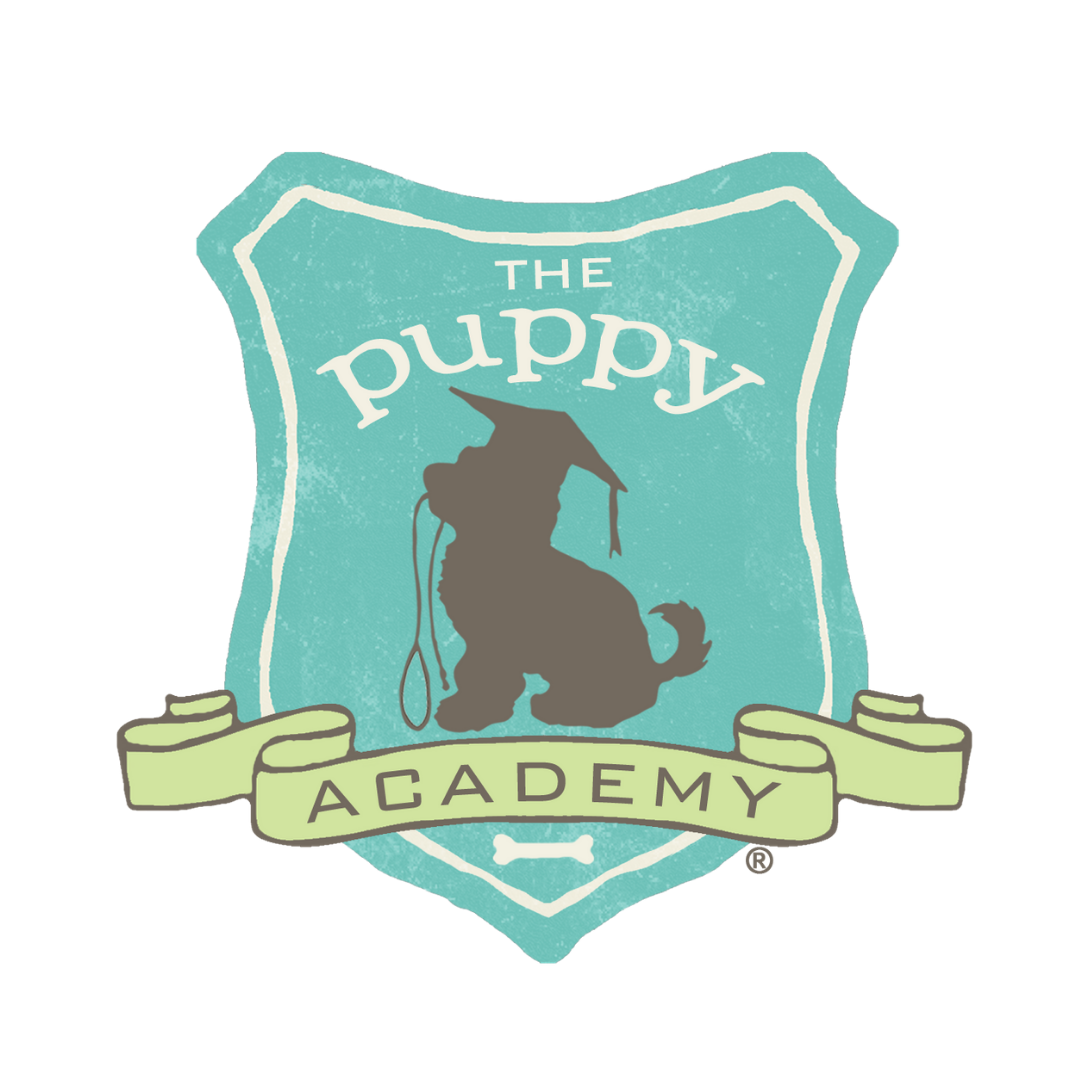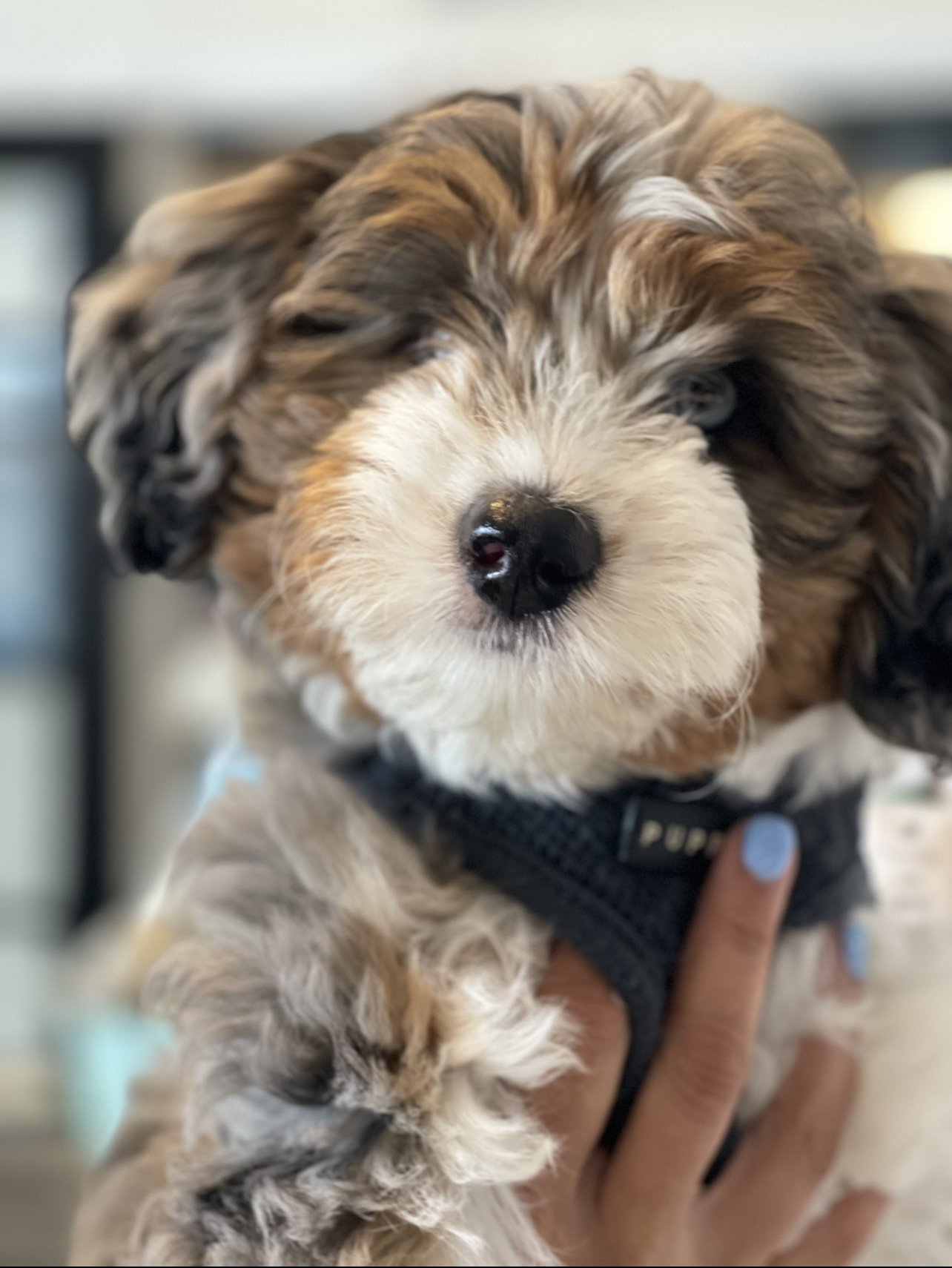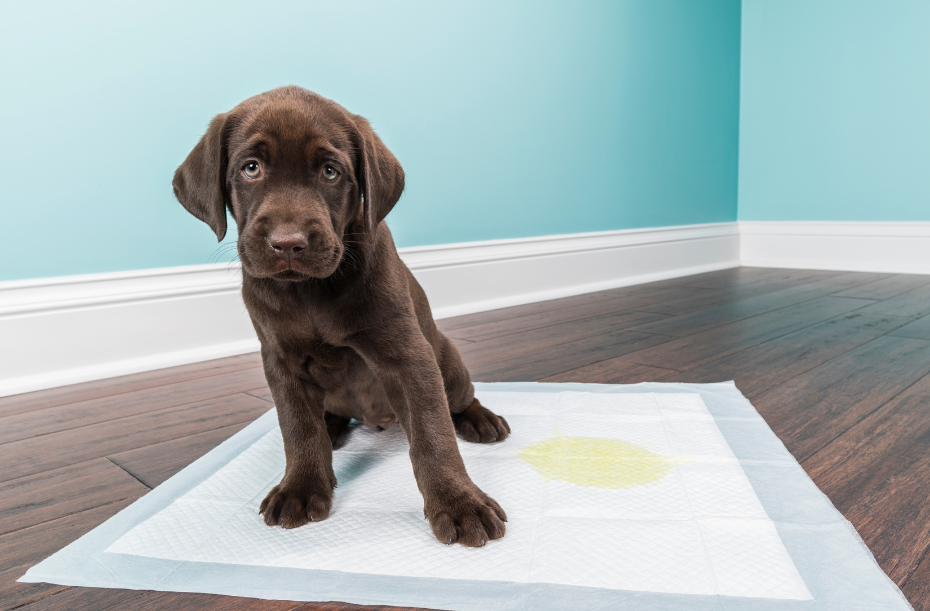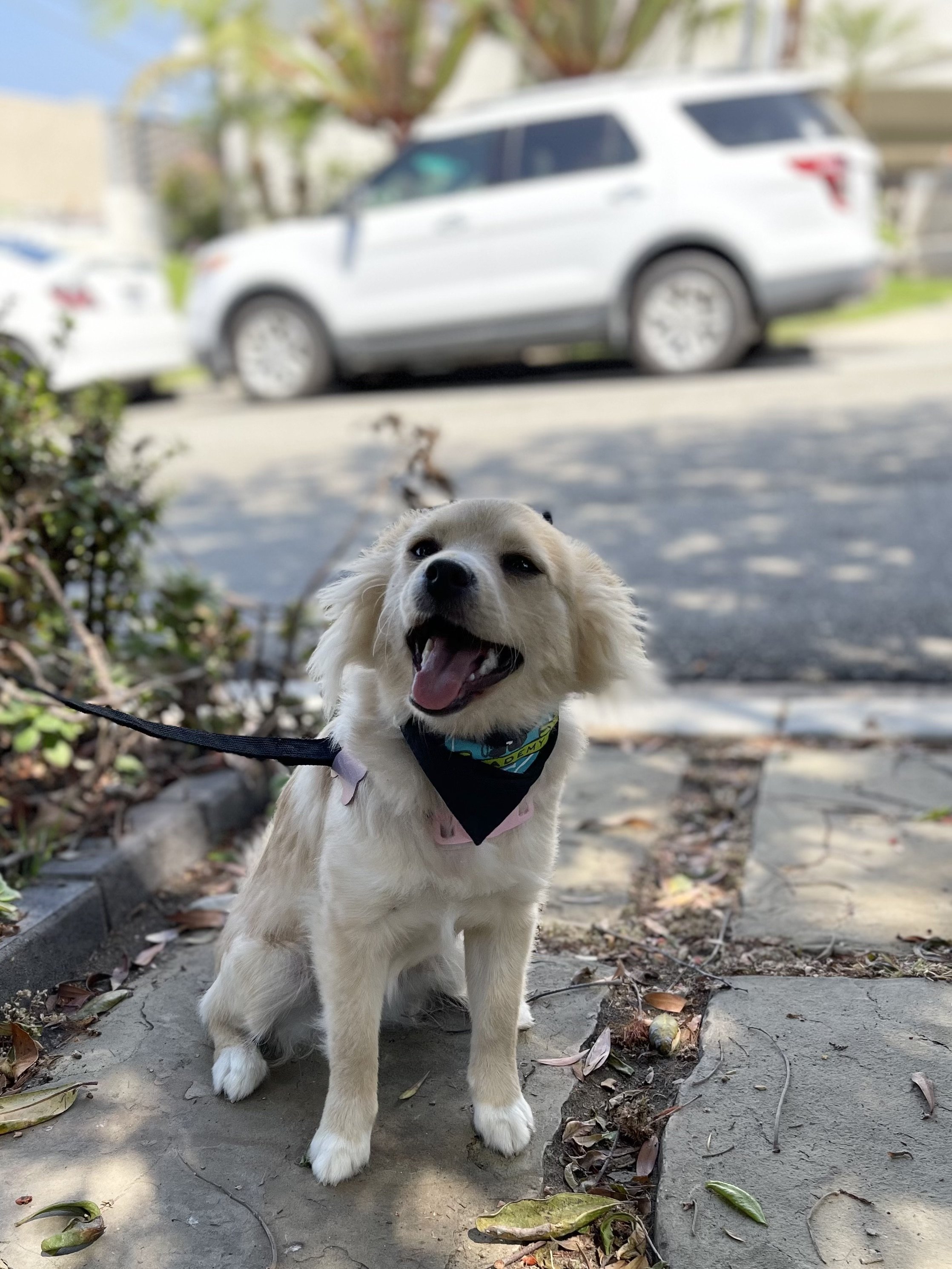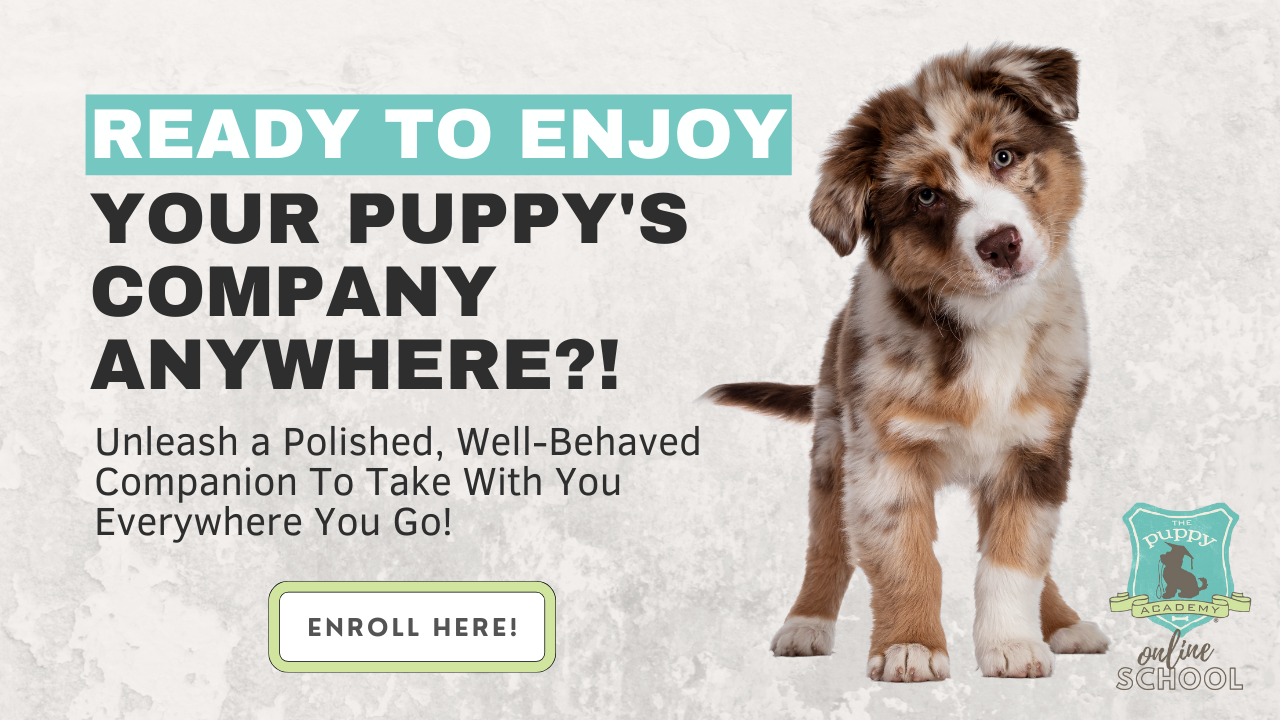When it comes to potty training your puppy, many new pup parents begin in the home on pads before moving outside. If you live in an apartment or area where you can’t easily access outside multiple times a day, or if your puppy isn't fully vaccinated yet and there's not a safe spot to take them to, potty pads are a convenient option to housebreak your puppy before transitioning to going outdoors! In this blog we’re covering how you can use pads to potty train a puppy fast!
We've potty trained thousands of puppies at our in-person school and online school to go both on pads and outdoors, so let’s dive into how to make sure your puppy is just as successful with their potty training!
The goal of potty training is to teach your puppy to go potty in a designated area, while also helping them learn how to hold their potty for longer periods of time. But that is easier said than done, especially for puppy parents that live in apartment buildings or in urban areas that don’t have easy access to outside spaces! In this case, training your puppy to use a potty pad (also known as a pee pad or puppy pad), can be a great alternative.
Why Use Potty Pads?
You may be familiar with the old newspaper, or cardboard substitutes from years ago that would get soggy and fall apart, or towels that needed constantly washing. Thankfully, dog product technology has since advanced and we have potty pads! They are extra absorbent, moisture-locking, odor-wicking (depending on the brand), and protective pads that you can use indoors and save your floors (and the mess!).
One of the most functional parts of potty pads is they are super quick and easy to clean up. And, there are a variety of options available out in the market to fit your puppy’s needs. For example, large-breed potty pad options protect and absorb more than what a small breed puppy would require.
How to Set Up Potty Pads in the Home
Start your puppy off with their potty training by picking a consistent spot in your home to keep their potty pad. Using the same spot will help your puppy make the association of where you’d like them to go, and create the muscle memory of going there so they create this good habit faster! In the beginning, cover a wider area with 3-4 potty pads until your puppy learns how to target the pad more precisely.
PRO TIP: Although you can leave potty pads in your puppy’s playpen to absorb any accidents they may have, this on its own won’t potty train your puppy. You’ll want to implement a potty schedule to teach them how to “hold it” and where to potty when it’s time to!
The Fastest Way to Potty Train: Create a Potty Schedule!
Just like it sounds, a potty training schedule lists out the times throughout the day that your puppy goes potty. To help you create one that works with for your puppy, we put together a sample schedule, plus a few potty training tips in our blog: “Create a Puppy Potty Schedule!”
How to Teach Your Pup to “GO” on the Pad
While following the schedule, at your puppy’s designated potty time, take them out of their crate, put on their harness and leash, and guide them to their potty pad area. Give them their “Go Potty!” command and allow them up to 3-5 minutes to relieve themselves. This is where the leash and harness come in handy! Alternatively, you can also enclose the potty pad area with a pen to help your pup stay in the area and teach them to target the pads!
If after 5 minutes your puppy still hasn’t gone yet, bring them back to their crate for another 15-20 minutes, then try again!
By guiding your puppy to their potty area at each potty break time, you're creating the association of where you'd like them to go. Over the upcoming weeks as your puppy starts to get the hang of it, you can start removing the amount of pads one at a time until you're eventually down to one pad only. After several weeks of diligent repetition, your puppy should be able to head to the pad on their own!
Provide Positive Reinforcement for Your Puppy
Much of creating positive associations in puppy training comes with rewards and praise. Your puppy’s potty training is no different! At The Puppy Academy, we like to call them “potty parties” meaning whenever your puppy goes potty on their potty pad at the right time, celebrate! Praise them, and you can even give them a special treat as a reward! They did what you wanted them to do and you want them to understand that action results in something good. Plus, making the experience a positive one encourages your puppy to repeat going potty in the same place!
Common Mistakes New Puppy Parents Make
Mistakes are normal, especially if this is your first-time potty training a puppy! If you are planning to potty train using pads, remember these tips:
Always monitor your puppy while they are going potty. There’s always a chance that your puppy will step off and go potty on the floor instead. They are still learning after all! Use their harness, leash, and a pen around the pad area to help with this!
Don’t let your puppy start to play or rip up their potty pads. Letting your puppy do this essentially makes potty pads go from a potty training tool to a toy! This can be confusing for your puppy and hard to teach them out of it plus dangerous if they start to chew and ingest them.
Keep the potty pads in the same location while your puppy is learning. Dogs don't generalize, so laying a potty pad down in a new spot won’t register as “I can go here and also here” to your puppy and it can create confusion and slow down their potty training process.
Troubleshooting Potty Accidents
Potty training accidents can happen for a variety of reasons. Here are some of the most common ones are how you can avoid them:
Potty breaks are too far apart. Young puppies still can’t hold their potty for long periods of time, and you may have waited too long to take them to go! Make sure to refer to our “Puppyhood Made Easy for New Owners: Create a Puppy Potty Schedule!” blog to learn how long your puppy can hold it, and how to step up a potty training schedule to get them on track.
Moving the potty pad. Another reason we mentioned briefly above is moving around your puppy’s potty pad while they are still learning. If you have moved your puppy’s potty pad and discovered an accident, try going back to where they first started going potty. Don't assume your puppy will know where to go just because the potty pad is out. Remove the guesswork by guiding them there each time so that you can build them up to them knowing where to go through this repetition, over the next several weeks.
Accidents in the crate. If your puppy is having accidents in their crate, it may be too big for them! Extra space invites your puppy to sleep on one side, and go potty on the other. Instinctually, your puppy won’t go potty where they sleep so just make sure to size your puppy’s crate to where they can stand, sit, lay down, and turn comfortably without extra room. And don't add potty pads INSIDE your pup's crate! This can also encourage them to go, instead of teaching them to hold it.
Free roaming when they haven’t pottied. If your puppy doesn't go potty at their designated time, don't let them free roam! Movement stirs up a pup's bladder and bowels. Instead, put them back in the crate for 15-20 minutes and repeat the process!
Mixing up activity order. Lastly, make sure you're following the recommended schedule in the correct order of activities of potty time > free time activity > food/water > crate/rest time. For example, if you give your their meal first, then let them play, this is asking for accidents! Set your puppy up for potty training success by getting them on a predictable schedule for them, and you!
Here’s a short video from our trainers with more tips on how to train your puppy to use a potty pad:
Still have more potty pad training questions? Ask our trainers every Wednesday at 1pm on our TikTok and Instagram @thepuppyacademy during our Ask A Puppy Trainer Show! All replays are posted afterward, and you can catch up on our last ones on our YouTube channel!
Need more puppy training help? Sign up here for the VIP (Very Important Puppy) list where we send weekly puppy training tips direct to your inbox!
Work with us directly at The Puppy Academy and The Puppy Academy Online School!
Check out these blogs related to puppy training and more!
Step-by-step Guide to Crate Training Your Puppy!
A Guide to Puppy Breeds: Goldendoodle!
Puppyhood Made Easy for New Owners: Beyond Puppy Training Basics!
